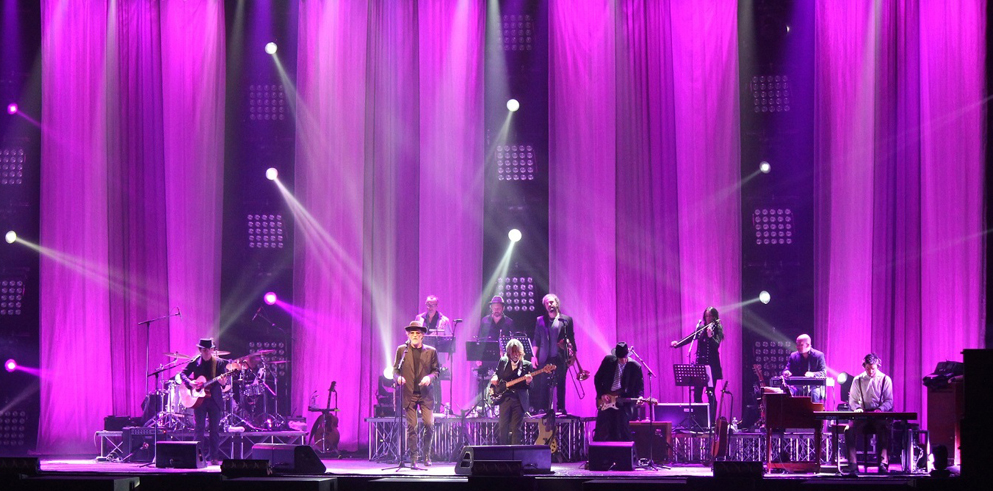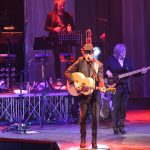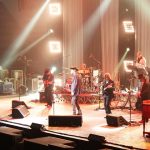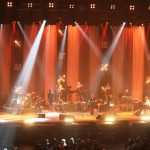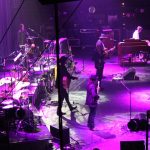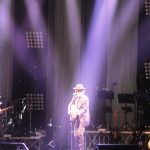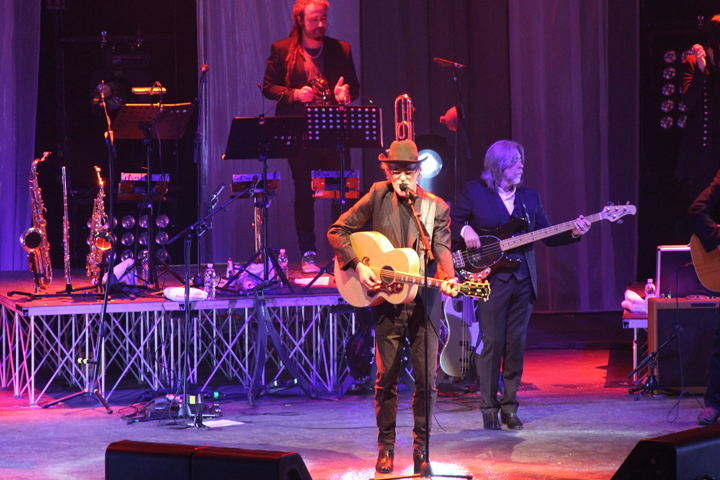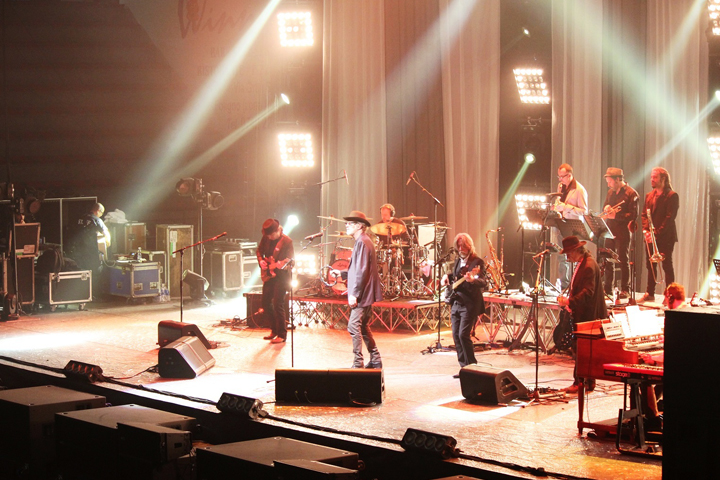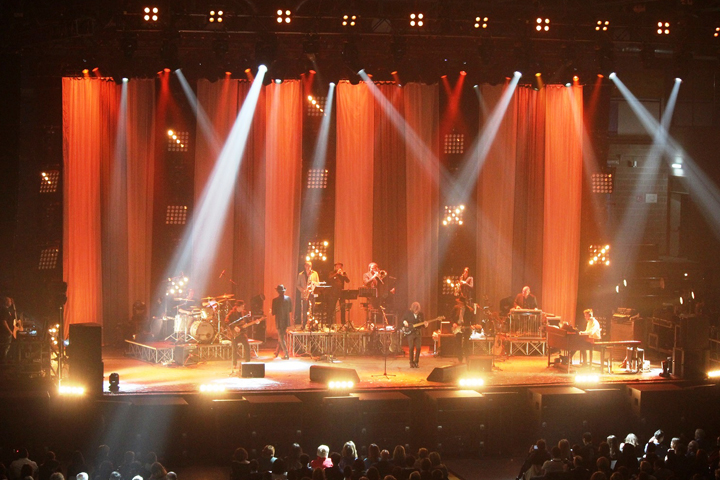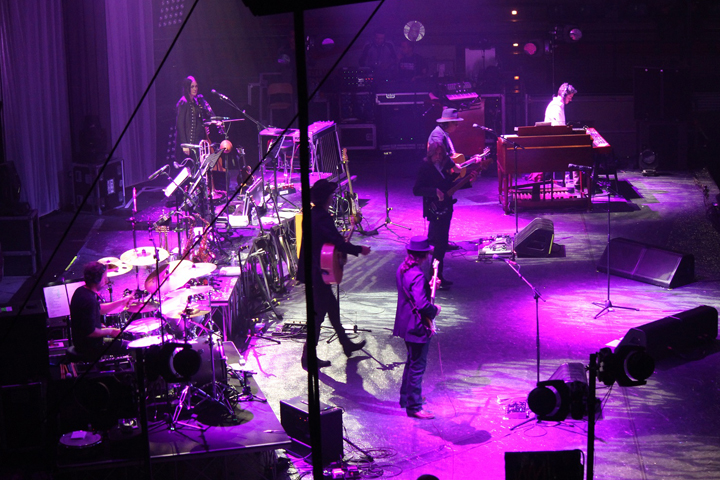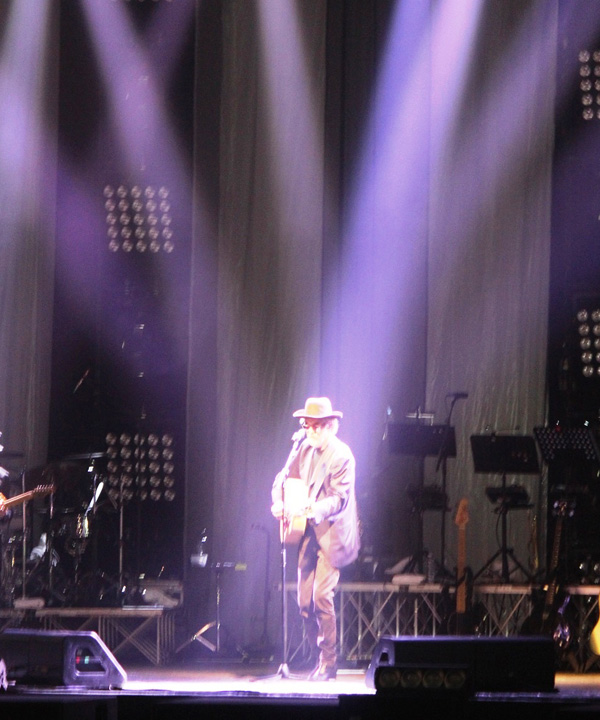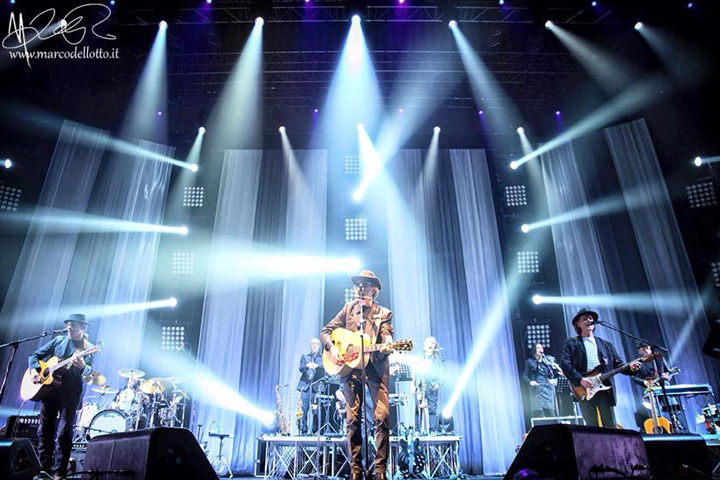Italy – Francesco De Gregori has appointed the lighting designer Andrea Coppini to design the lighting at his concerts for several years now. In recent years, Coppini has often relied on Clay Paky equipment.
Tell me Andrea, how did you meet and get to know De Gregori?
“I have been working with Agorà for more than ten years. I met De Gregori in the summer of 2008, when I stood in for his previous lighting operator, who was no longer available. From that moment on, I started working continuously with the artist and the production team. This means I present new designs whenever a new tour starts. I have been designing the lighting for De Gregori for six years.”
“I have grown together with Francesco. In the early years, Francesco had a minimalist idea of show aesthetics: he preferred a plain stage, with no particular special or lighting effects. Over time he developed the idea that stage design also played an important role in the final concert rendition. Several projects followed. The first consisted of a black theatrical setting and lighting effects only. We then moved onto more complex sets with scenery and backdrops, right up to the most recent, dynamic designs with curtains and light projectors on the backdrop. His latest tour was called Viva Voce 2015. It started in March and has just ended with the forty years of Rimmel concert at the Verona Arena on 22 September.” Rimmel is the name of De Gregori’s third album.
Indoor arenas and the Verona Arena are challenging settings, which are very different to each other. Which Clay Paky lights did you rely on?
“Setting up the technical systems is always the most challenging task. Viva Voce 2015 evolved several times as it was going along. We started with six dates in indoor arenas. Then, once we got to the first theatre, we had to adapt the technical specifications of the concert. During the summer, the show equipment is different again: lighter and more agile. You go around with half the production equipment since most of the systems and structures are already waiting for you on site. In the original design (the most complex version), the main stage lighting consisted almost entirely of Clay Paky equipment.”
“The lights were arranged on three battens: one at the front and two levels of back lighting. Alpha Profile 1500s, which are very powerful with a versatile optical unit, were alternated with Sharpy Wash 330s, which are compact, lightweight, silent and fast. They are also powerful and have all the classic Clay Paky colours. Both of these lights are fitted with OSRAM lamps. I love to add softer side lights to this basic design (in this case LED wash units) to illuminate the scenery. This technique comes from the theatre, but it is not always used in concerts. I have used this arrangement for several years at Francesco De Gregori concerts, since it allows me to mix side lighting with front lighting and back lighting to create the main atmosphere at the concert.
Lastly, I opted for compact, lightweight Alpha Beam 700s for the backdrop: I needed lights with a fairly substantial, clearly visible light beam since they were the key dynamic element of the show.
These lights met my needs fully with their focused beam, gobos and CMY colour mixing system. I intermixed some Chromlech Jarag units with them, which are 5 x 5 matrices with halogen lamps.”
How do you keep up to date with Clay Paky’s innovative products?
“I mainly keep up to date on the field, on the Internet and on the technical forums. I speak to lighting designers who are more experienced than me. I also have to say that working with Agorà, I basically deal with high-profile products, and I find a big difference in quality between Clay Paky lights and most others. I also think the Sharpy has marked the beginning of a new era.”
Andrea Coppini
Andrea Coppini began working professionally in the show lighting field in September 2001 when he decided to turn his passion for lighting into a new profession after ten years of working in the industrial automation sector. He has been working with Agorà since 2004. During the years, he has had the opportunity to work first as a technician, then as an operator and now as a lighting designer on some of the biggest concert tours in Italy.
His training as a programmer and operator started with the Compulite Spark 4D desk: he attended a training course held by Jerry Romani and organized by Libera Accademia della Luce in 2002. He later learnt to use a Regia 2048 console at SGM, following a course taught by Aldo Visentin, and became a consultant for SGM as a beta tester for the Regia console itself.
In 2004, he learnt to use the Grand MA console by attending a training course at Molpass. This then became his speciality and it is still the console he feels is most akin to his programming.
To broaden his knowledge, he attended a seminar on the Whole Hog III held by Chris Ferrante and organized by Ianiro and the Libera Accademia della Luce in 2005.
He learnt about the new Grand MA2 console at Molpass in 2010 and became an expert programmer. At the same time, he began using the Pandora’s Box media server.
Furthermore he learnt to use the Jands Vista Byron console in 2013.
He has also specialized in the use of 3D Lightconverse graphic display software since 2008. This software is used to render designs and pre-program light shows virtually.
Over the years he has distinguished himself as a lighting manager and assistant lighting designer on some of the productions Agorà has worked on. On these occasions, he has worked with some of the best known lighting designers in Italy: first and foremost Mariano De Tassis and Francesco De Cave.
